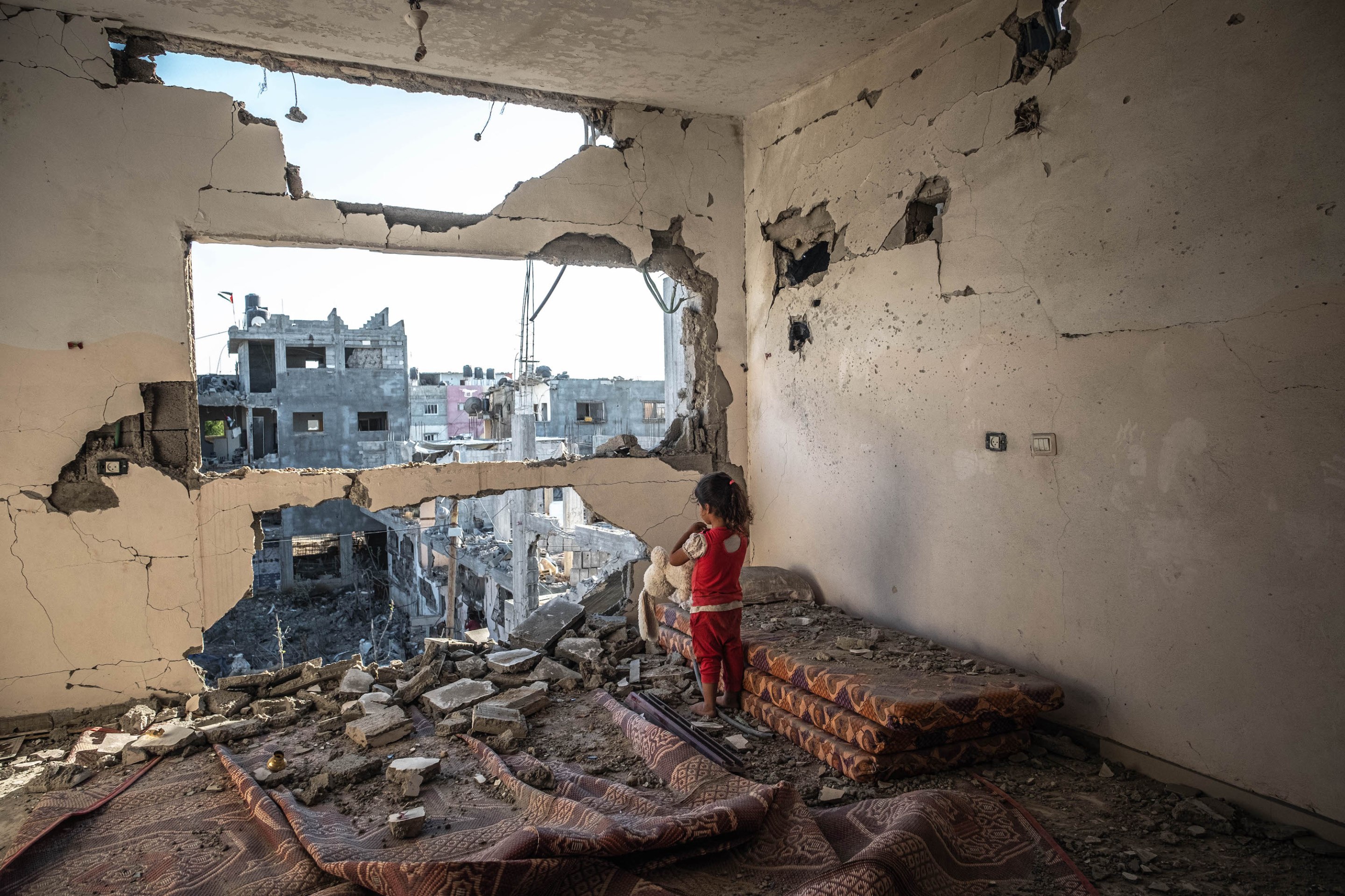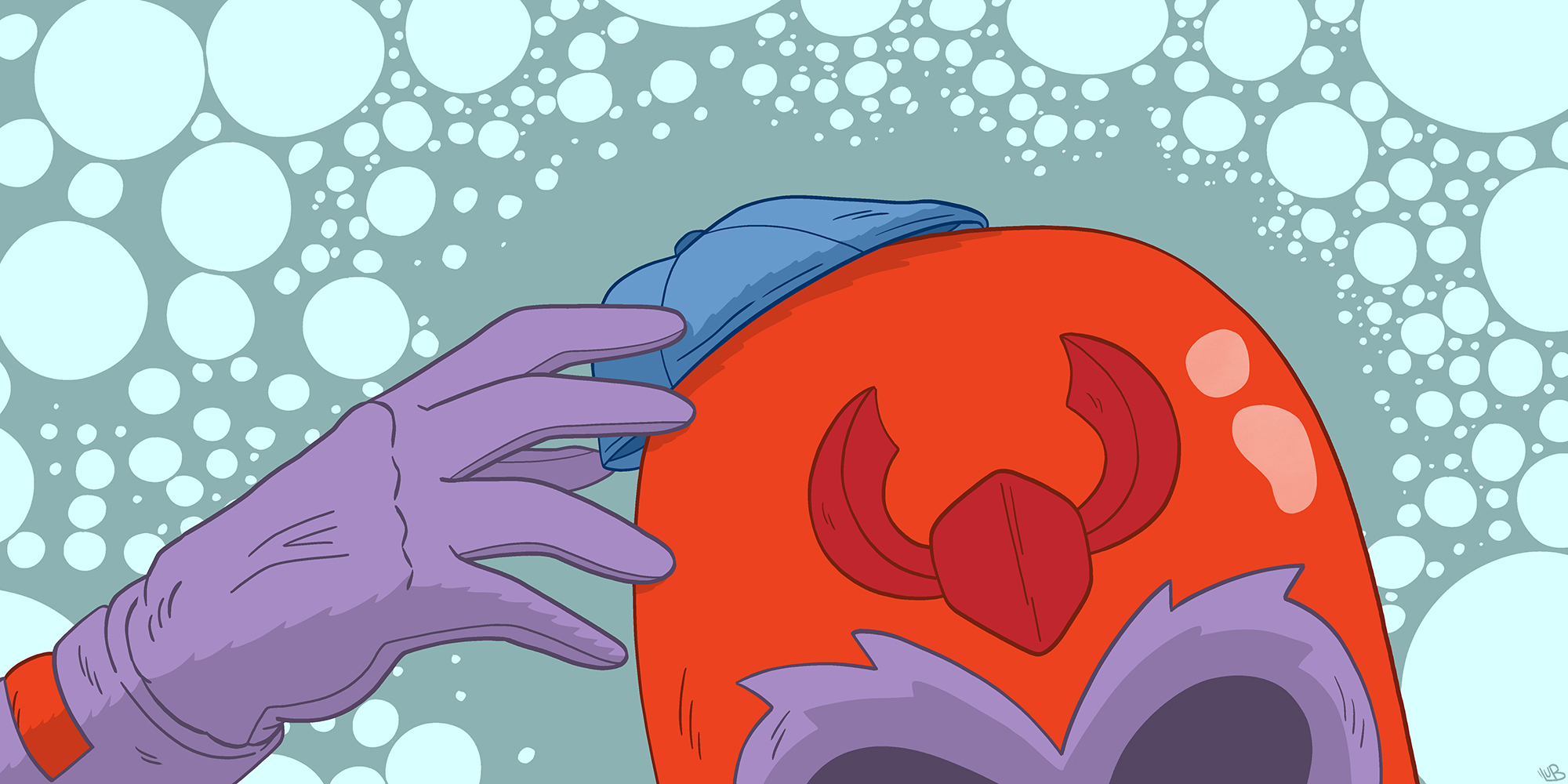What A Ceasefire Really Means
4:44 PM EDT on May 28, 2021

On May 18, an Israeli police officer shot 16-year-old Jana Kiswani in the back with a rubber-coated bullet, breaking her vertebra. Kiswani was walking into her house in East Jerusalem when the officer shot her; it was all on video. The officer was suspended, pending an investigation. There’s a good chance that will be the extent of the punishment.
תיעוד רגע הירי של השוטר. תגובת המשטרה טרם התקבלה@SuleimanMas1 pic.twitter.com/LwzEySUzGP
— כאן חדשות (@kann_news) May 25, 2021
A ceasefire between Israel and Palestine began on May 21, supposedly. What a ceasefire meant in this instance is that Israel would stop bombing civilians indiscriminately. The other random acts of on-the-ground violence, such as harassing and beating Palestinian journalists at Al-Aqsa Mosque, could still be dressed up in justifications, and could continue.
On May 25, an Israeli undercover unit shot and killed a refugee camp resident named Ahmad Jamil Fahd at close range in the West Bank. An Israeli security official claimed it was part of a predawn arrest operation, and no further details were—or are—forthcoming. Fahd was reportedly left to bleed out in the street.
I dread writing about Palestine, but it’s not because, as some people have prefaced, that the central facts are particularly complex. Plenty of well-meaning but poorly read souls have worn out those words over the past month as a way to get out of truthfully confronting what’s happening. It’s a campaign of brutality against Palestinians, and the only real difficulty is in knowing where to start.
If you believe Patrick Kingsley of the New York Times, it started on April 13, the first day of Ramadan, when Israeli police entered Al-Aqsa and cut the cables to loudspeakers used for prayers, because the Israeli president was going to deliver a speech at the Western Wall nearby. Then again, maybe you shouldn’t believe Kingsley; the New York Times has been playing catch-up the whole time. When Kingsley was made the Jerusalem bureau chief, the Times announcement said he would be “refreshing his Arabic.” Halfway through May, he shared a vacant job posting for “a reporter on Palestinian affairs.” He reported the details of April 13 in an article with the headline “After Years of Quiet, Israeli-Palestinian Conflict Exploded. Why Now?” As he contrasted the events of May with the lack of violence over the past few years, he did not seem to find it relevant to reference the 2018 Great March of Return, a nonviolent border protest by refugees who wanted to return home, at which Israeli troops killed 183 and injured thousands with live ammunition.
A later but safer place to start would be earlier in May, when the Israeli Supreme Court planned to issue a ruling on an expulsion order that would have deliberately displaced six Palestinian families so that Jewish settlers could take over their homes in the Sheikh Jarrah neighborhood of Jerusalem. As protests and attention grew, the court postponed the decision. Israel took the opportunity to reemphasize who held control.
Israeli settlers attacked Palestinians who were breaking fast. Israeli forces sprayed skunk water on homes and shot stun grenades into the Al-Aqsa prayer room as Palestinians fled. In a scene horrifically familiar to Americans, two Israeli police officers sat on a Palestinian named Omar al-Khatib as he cried that they were suffocating him. (Khatib was released the following day without serious harm.)
“You’re suffocating me!”
— لينة (@LinahAlsaafin) May 5, 2021
Omar Khatib was one of the Palestinians arrested in Sheikh Jarrah last night. Look how many Israeli forces are on him.pic.twitter.com/qfJ5SDxyNO
Those expulsion orders were one small part of a larger systematic process that Israel has followed for decades, dating back to the Nakba in May of 1948, when hundreds of thousands of Palestinians were forced from their homes, the rights to their property taken away from them. Since then, Israel has used its courts and its settlers to gradually kick out more Palestinians and take their land. The families in Sheikh Jarrah were among the Palestinians who were forced from their homes 73 years ago. Displacing them once wasn’t enough.
While the 2018 border protests received coverage, the widespread reassessments of policing and power after the murder of George Floyd clearly influenced the increased attention to Sheikh Jarrah this month. With the world watching, Israel could only have been thrilled that the expulsions drew in Hamas. Now they could claim a justification for brutality.
Hamas wears a lot of hats: It’s a ruling party, it’s a social services organization, it’s a military—or at least it’s the closest thing to all three in a state largely denied the right to govern or defend itself. But to many Western ears, getting their news from uninformed or outright pro-Israel media, it’s a terrorist organization and nothing else. Israel knows this, encourages this, and uses this. With the involvement of Hamas, Israel could pretend it was only defending itself, rather than carrying on the same decades-old campaign.
As attacks on Sheikh Jarrah and Al-Aqsa continued, Hamas threatened to intervene if the Israelis did not back off. Instead, the Israeli police intensified their raids. On one of the final days of Ramadan, hundreds of worshippers were injured when Israeli forces stormed the Al Aqsa compound. Soon after, Hamas carried out its threat, firing homemade rockets from Gaza that landed near Jerusalem.
In retaliation, Israel bombed residential buildings. They bombed schools. They bombed the offices of the Associated Press and Al Jazeera. They bombed entire extended families. They bombed a doctor and 12 members of his family. They bombed children. They bombed children who were seeking counseling for trauma. They bombed the Palestinian Children’s Relief Fund. No part of this was done carelessly; it was with purpose. Although it drew focus and scrutiny from the rest of the world, Israel did not stop. Who was in a position to stop them?
All of these beatings and bombings were done under the pretense that it would be one step closer to defeating Hamas. To shove women with backpacks and purses was to strike a blow to Hamas. To destroy Gaza’s remaining resources was to cripple this bogeyman. No actual proof was needed. The simple existence of Hamas is probable cause to shoot protestors in kneecaps, beat people in the street, take homes, and subjugate two million residents of Gaza.
“I would hope that if I lived in an open-air prison where my family and neighbors were being murdered, my humanity being erased by a powerful nation backed by the most powerful government on Earth, that I would find the moral strength not to fire rockets at the civilians of the country whose government wants me dead and repeatedly attempts to murder me,” Jeremy Scahill wrote at The Intercept. “But I cannot state with certainty that I would not resort to such a response if I lived, as the people of Gaza do, trapped in a killing cage.” That’s a pretty good way of thinking about it. And the trauma is generational, from the grandparents who were driven out of their homes, to their grandchildren growing up inside a kill zone.
I’ve been conditioned over the course of my life to believe that no one with power will ever care about the Palestinian cause. While this may seem nihilistic, it hasn’t been proven incorrect yet. The United States government, which gives billions of dollars to Israel so that they’ll buy U.S. weapons, clearly isn’t bothered. Even after the atrocities of this month, the Biden administration is moving ahead with plans to give them $735 million more. The United Nations issues stern reprimands and does nothing further.
So as the outrage grew about what was happening in Sheikh Jarrah, I found it surreal to go on Twitter and Instagram and see so many posts and infographics showing explicit solidarity with Palestine. It was not long ago that “Free Palestine” was a slogan that would invite disingenuous criticism and browbeating. I remember writing a short article in 2014 about NBA player Dwight Howard, who briefly aligned with the movement on Twitter before saying he regretted it. Omri Casspi was mad about his colleague’s tweet.
There is a temptation to say that the window of discourse on Israel and Palestine has moved, that it is more permissible than it was to be openly critical of Israel. This is true, but only to an extent. An Associated Press reporter can still get brigaded out of her job for having supported Palestine in college, as well as for Facebook posts that are supposedly antisemitic, if you ignore the fact that she grew up in an Orthodox community. In the past couple of weeks, The Intercept’s Akela Lacy has reported on Canadian and Australian journalists who publicly pushed for better coverage of the attacks on Gaza and faced warnings or threats of losing their contracts for doing so. Per Lacy’s article, a CBC News Toronto executive producer sent an email to staff recommending that they “avoid using ‘Palestine’ colloquially in our own exchanges,” so that they don’t “accidentally write or say it in something that is published or broadcast.” The Anti-Defamation League compiles specious statistics that conflate support for Palestine with antisemitism, which those who want to maintain Israel's dominion over Palestinians can use in an attempt to shout down any conversation about the policies of Israel's government.
Palestinians, and those who support the end of occupation, don’t have many tools. Fighting back is not allowed. Boycotts are not allowed. Speaking out is allowed only under very selective circumstances. Facebook, Twitter, and Instagram will limit this speech and blame it on a technical error. The organization Canary Mission exists to police the discourse and blacklist whoever it can. This is not some kind of vigilante project; the Israeli government has used the site’s findings to interrogate and deny visitors who are too sympathetic to BDS. If I try to travel to Palestine in the future, there’s a non-zero chance that Israel would bring up this article to prevent me from entering.
Gaza and the West Bank will remain as they are, the Palestinians left to pick up the pieces and wait until their occupiers conduct another land grab. Israel will put them on a diet, “mow the lawn,” withhold vaccines, or use some other strategy of attrition. That has been the goal all along. Ethnic cleansing at a slow enough pace can be disguised as a complicated conflict. A ceasefire doesn’t mean an end to the killing.
If you liked this blog, please share it! Your referrals help Defector reach new readers, and those new readers always get a few free blogs before encountering our paywall.
Managing Editor
Read More:
Stay in touch
Sign up for our free newsletter




